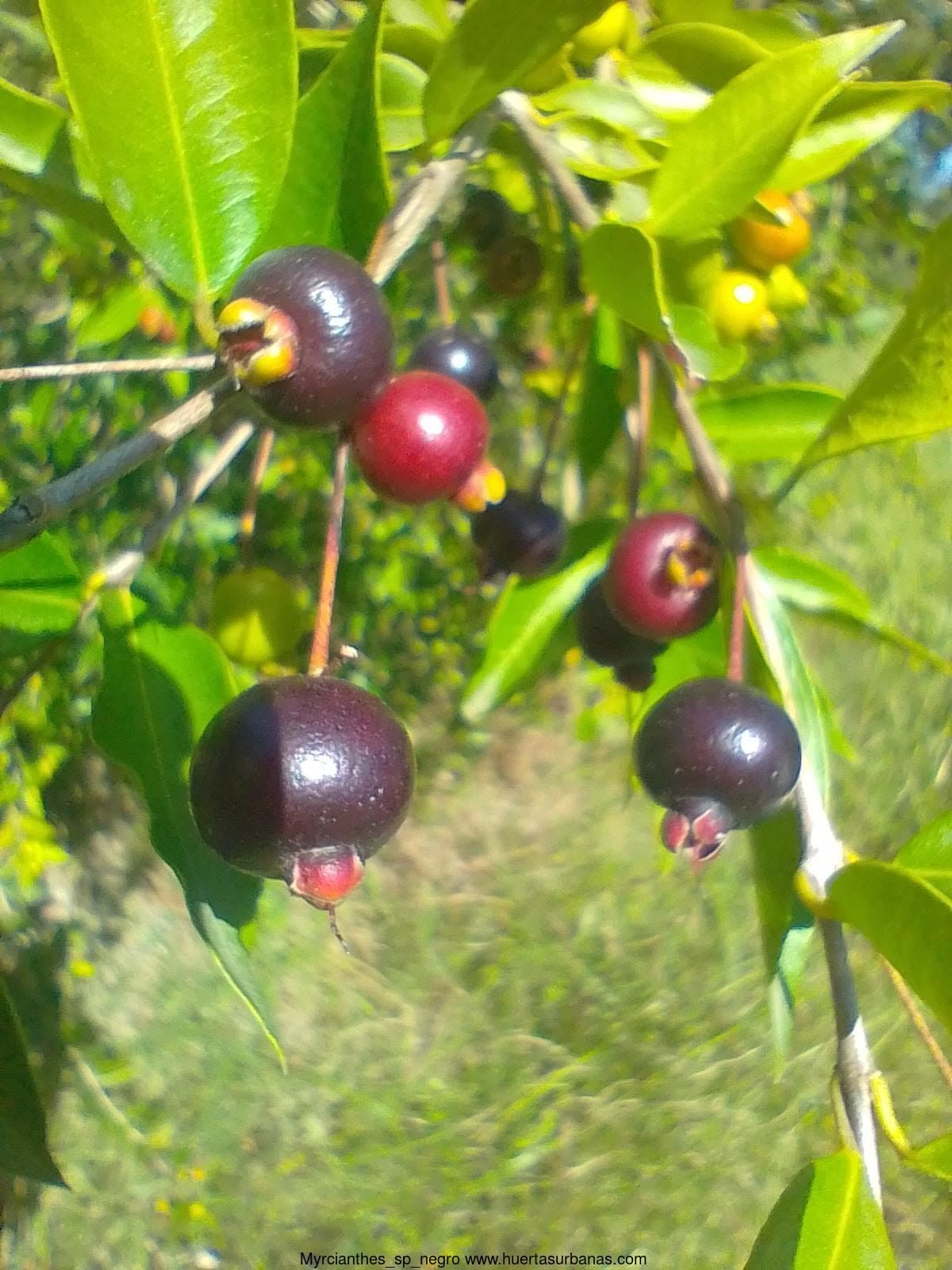Myrcianthes sp Negro
Seeds were imported from Argentina. These were purchased from Marcos, this is what he has to say about this species:
While superficially resembling a diminutive Guaviyu variety due to its smaller stature and delayed fruiting, closer examination unveiled several defining characteristics that set this cultivar apart. Unlike the typical tree-like form of Guaviyu, this variety exhibits a more open, shrubby growth pattern. Subtle variations in leaf shape and coloration from the traditional Guaviyu were noted. Fruit Development: The ripening process is marked by a striking display of vibrant yellow and orange hues, which are not observed in Guaviyu fruits. This variety produces distinctively green-colored seeds, contrasting with the typical seed color of Guaviyu. The fruiting panicles are elongated, differing from the conventional Guaviyu inflorescence structure. The fruit skin is smooth, lacking the fine hairs present on Guaviyu fruits. Organoleptic Evaluation Perhaps the most notable distinction lies in the organoleptic properties of this variety's fruit. Upon tasting, an intense taste different than Guaviyu was detected, imparting a truly unique and tropically inspired flavor profile.
Seeds are germinated and shipped in humid vermiculite.
Seeds were imported from Argentina. These were purchased from Marcos, this is what he has to say about this species:
While superficially resembling a diminutive Guaviyu variety due to its smaller stature and delayed fruiting, closer examination unveiled several defining characteristics that set this cultivar apart. Unlike the typical tree-like form of Guaviyu, this variety exhibits a more open, shrubby growth pattern. Subtle variations in leaf shape and coloration from the traditional Guaviyu were noted. Fruit Development: The ripening process is marked by a striking display of vibrant yellow and orange hues, which are not observed in Guaviyu fruits. This variety produces distinctively green-colored seeds, contrasting with the typical seed color of Guaviyu. The fruiting panicles are elongated, differing from the conventional Guaviyu inflorescence structure. The fruit skin is smooth, lacking the fine hairs present on Guaviyu fruits. Organoleptic Evaluation Perhaps the most notable distinction lies in the organoleptic properties of this variety's fruit. Upon tasting, an intense taste different than Guaviyu was detected, imparting a truly unique and tropically inspired flavor profile.
Seeds are germinated and shipped in humid vermiculite.
Seeds were imported from Argentina. These were purchased from Marcos, this is what he has to say about this species:
While superficially resembling a diminutive Guaviyu variety due to its smaller stature and delayed fruiting, closer examination unveiled several defining characteristics that set this cultivar apart. Unlike the typical tree-like form of Guaviyu, this variety exhibits a more open, shrubby growth pattern. Subtle variations in leaf shape and coloration from the traditional Guaviyu were noted. Fruit Development: The ripening process is marked by a striking display of vibrant yellow and orange hues, which are not observed in Guaviyu fruits. This variety produces distinctively green-colored seeds, contrasting with the typical seed color of Guaviyu. The fruiting panicles are elongated, differing from the conventional Guaviyu inflorescence structure. The fruit skin is smooth, lacking the fine hairs present on Guaviyu fruits. Organoleptic Evaluation Perhaps the most notable distinction lies in the organoleptic properties of this variety's fruit. Upon tasting, an intense taste different than Guaviyu was detected, imparting a truly unique and tropically inspired flavor profile.
Seeds are germinated and shipped in humid vermiculite.





